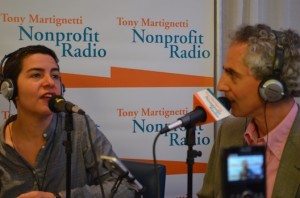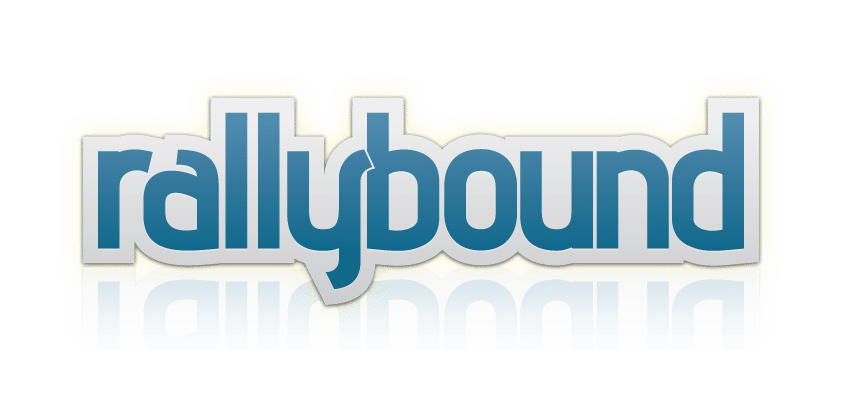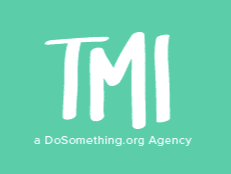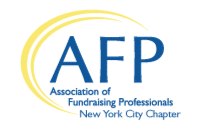
I love our sponsors!
WegnerCPAs. Guiding you. Beyond the numbers.
Cougar Mountain Software: Denali Fund is their complete accounting solution, made for nonprofits. Claim your free 60-day trial.
Turn Two Communications: PR and content for nonprofits. Your story is our mission.
Get Nonprofit Radio insider alerts!
Listen Live or Archive:
- On Fridays at 1pm Eastern: Talking Alternative Radio and tune in
- Listen to the March 30, 2020 archived podcast
My Guest:

Sarah Durham: Coronavirus Communications
Our third Special Episode features Sarah Durham, CEO of Big Duck. Amidst our pandemic, what’s the right timing for the right messages to the right audiences? She also explains her 5 principles of tone and style.
Top Trends. Sound Advice. Lively Conversation.
Board relations. Fundraising. Volunteer management. Prospect research. Legal compliance. Accounting. Finance. Investments. Donor relations. Public relations. Marketing. Technology. Social media.
Every nonprofit struggles with these issues. Big nonprofits hire experts. The other 95% listen to Tony Martignetti Nonprofit Radio. Trusted experts and leading thinkers join me each week to tackle the tough issues. If you have big dreams but a small budget, you have a home at Tony Martignetti Nonprofit Radio.
Get Nonprofit Radio insider alerts!
Sponsored by:
View Full TranscriptProcessed on: 2020-03-29T23:31:59.116Z
S3 bucket containing transcription results: transcript.results
Link to bucket: s3.console.aws.amazon.com/s3/buckets/transcript.results
Path to JSON: 2020…03…482a_tony_martignetti_nonprofit_radio_20200330.mp3.117101786.json
Path to text: transcripts/2020/03/482a_tony_martignetti_nonprofit_radio_20200330.txt
[00:00:43.04] spk_1:
welcome to tony-martignetti non profit radio coverage of 20 and T. C. That’s the 2020 non profit technology conference. Regrettably, the conference in Baltimore had to be canceled, but we’re persevering virtually via zoom, sponsored at 20 NTC by Cougar Mountain Software Denali Fund is there complete accounting solution made for nonprofits tony-dot-M.A.-slash-Pursuant Mountain for a free 60 day trial. My guest today is Sarah Durum. She is CEO of Big Duck and add dramatic Sarah. Welcome.
Hi, tony. Thanks for having me on the show today. [00:00:52.67] spk_1:
I’m glad it worked out that we could get together. Virtually, uh, not being able to do it together in Baltimore. Um, how are you doing? You’re in. You’re in Middle Massachusetts? Yeah. [00:01:04.19] spk_4:
I’m a native New Yorker, and I live and work in New York, but I have decamped to Massachusetts. Everything is fine here. Thank you for asking. I hope you’re well too. I [00:01:56.34] spk_1:
am. I mean, my beach house in North Carolina. The beaches across the street, the beaches are open so I can walk there because we don’t get crowds on beaches. It’s to the town is too small. Nobody’s heard of it. Which is which is why I’m here. Um, so we’re gonna you know, NTC brought us together. Uh, but I’m gonna release this as a special episode of non profit radio because you’re deep expertise in communications, and you’re you’re you’re NTC Topic was creating kick ass major donor communications. Uh, with your permission, I’m gonna convert that creating kick ass Corona virus Communications, please. Okay. Okay. And we’re gonna We’re recording this, Ana Wednesday, March 24th. And, [00:02:03.94] spk_2:
uh, we’re gonna look for release on next Monday. Whichever day the But everyone is, that looks [00:02:32.34] spk_1:
like the 30. I think that’s the 30th of March. Gonna look to get this out. Um, all right. And I’m gonna you leave it to you. What? Where? How should we? Let’s let’s talk about communicating with our donors because there’s gonna be a time when fundraising is the message. I don’t think that’s the time. This is the time now. But what should we be saying to our committed donor? People are already giving to us. We’re not trying to acquire anybody new at this stage. Um, what should we be saying to people who are already [00:02:34.47] spk_2:
loyal to us? [00:02:35.95] spk_4:
Well, first of all, I love that you’re starting with this question of, you know, the people that are already loyal tow us. I think there’s what should we be saying? How should we be saying it, and when should we be saying it? And certainly starting with your base is one of the most important things you can do right now. What you should be saying, I think, depends a lot on your mission and how affected your donors and the audiences you serve might be by what’s going on right now. If you’re in an area that’s directly affected, then you want to speak to that very directly. But if you’re not, you may want to be candid about what you’re working on and what’s going on in other ways. [00:03:24.50] spk_1:
What’s going on? Can it be stories about where your how your employees air faring? You’ve got parent employees. You’ve got some maybe can’t work remotely. People do face to face meetings, maybe with beneficiaries. They can’t do that. You know, if the story’s gonna be like insider baseball, [00:03:53.67] spk_4:
it can and it can’t. I did an interview recently with Seville Me hand are who’s one of the leaders at CCS fundraising, and we were talking about exactly that. We were agreeing in our conversation that in some cases the first wave of communications should be the insider. Baseball. How is your team faring? But a lot of organizations already done that. That happened in Week one. For most organizations. The second wave of communications after you send the Here’s how we’re faring really should be. I think about your community and about your work and, um, and beyond that, talking about what’s going on in the future and how you’re navigating. I mean, there there are, You know, there are five or so principles that we’ve been advising our clients to use in terms of their tone and style, and I think a lot of it is about adapting those principles of tone and style in a few ways. But the other piece that I think is perhaps most critical is that you, um, you adapt your communications to be much more iterative, both in terms of how you plan and what you’re doing. In other words, if you had a communications plan or strategy, probably it’s needs to be updated on a weekly basis every week. Who are you communicating with? What are you trying to communicate and what will feel appropriate from a tone and style point of view for those donors to hear from you this week, given what’s happening? [00:05:09.54] spk_1:
Um, how about those five principles? What are those? [00:05:13.44] spk_4:
Well, so the 1st 1 is to be authentic. One of the questions that we’ve been getting a lot is should I be candid with our donors about the financial hit that our organization is taking? And our advice is yes, you should be. You’re gonna You’re gonna need Thio. Ask them for support and you don’t wantto paint a rosy picture If that’s not the reality for your organization. [00:05:46.74] spk_1:
You know, I think a great example of that is any sample Ward CEO, then 10 Great exit. D’oh! You know, you see her wiping tears from her eyes in her video explaining that that conference is 62% of their annual revenue and now they’ve not only lost that revenue, but they have penalties to pay for the contracts that they’re breaking. So you know, she was I think that it’s a great example and absolutely great read with authentic, heartfelt, sincere, You know, she’s she’s tearful and she didn’t do it take to [00:06:11.74] spk_4:
yet? No. Amy is a great example of an authentic leader in all contexts and particularly if you haven’t watched those videos on the end 10 website where she really you know, day by day she was navigating, making a decision about when to cancel the conference and how to do that? That’s That’s arguably, I would say, the best example. I’ve seen OVEN or organization leader being proactive and authentic, and [00:06:45.12] spk_1:
in 10 dot org’s I listeners know her very very well. She’s on the show every month, but in 10 dot organ yet you feel her our anguish. You feel it’s an excruciating decision, but yeah, I mean, that has to be made. [00:07:11.04] spk_4:
Yep, and Amy Amy is also an example. Those videos are a great example of some of the other tips that we’ve been giving people. The second is to use your values, use the values of your organization if you if you look at the way and he did it in that communications. She talks about the values of the community, the values of connection that they they share with each other, and she really leans into the organization’s values to guide her decision making, and we’re encouraging all organizations to do that. She is also very human. And that’s another thing that I think is really important right now. [00:07:25.09] spk_5:
There are There are [00:07:26.39] spk_4:
e mails that we are all getting that are not at all acknowledging the situation that people are in and they don’t feel good right now. They feel inappropriate. So it’s okay to be human. It’s okay to reach out and call your major donors and say to them, How are you doing? Here’s how I’m doing and make a human connection. The compassion that we express for each other right now is what’s gonna bind us together [00:08:20.74] spk_1:
and especially exactly That’s the point. I was just gonna say, Yeah, this is what holds us together is our common humanity. And, you know, not only is it okay, I don’t You go out of your way to preserve your humanity in the face of uncertainty, Financial loss, both personal and professional. You know, the organizational level and on a personal level, those of us who have their own businesses, you know you have employees go out of your way to preserve your humanity. [00:09:07.53] spk_4:
Absolutely. One of one of my employees at Big Duck, a copywriter named Lila Dublin just wrote a piece that we are going to probably post in our block in the next couple of days. It should be live by the time your show airs about words to avoid during during this crisis. Delilah writes a very popular blogger every year called words to avoid in the nonprofit sector. But this one is the sort of Corona virus specific set of words to avoid, and one of the words she recommends avoiding is social distancing. She talks in this piece about how what we want to engage in right now is physical distancing. We don’t need social distancing. We actually need social connections more than ever. So So let’s let’s work on staying apart physically. But actually with your donors staying in touch and being human and on, um, making that personal connection with them is is what’s gonna weave the social capital you have with them, um, in an even tighter way, which is which is, you know, whether or not they’re going to donate to you or have the capacity to donate you right now is just the right thing to do. [00:09:33.64] spk_1:
Yeah, yeah. What’s where Do radio people find that that blogged? [00:09:40.41] spk_4:
Uh, it’s going to be on big duck dot com. And if you go to insights, um, so that’s big duck dot com slash insights. You’ll see that you’ll see the blog’s. We also have recorded videos about crisis communications right now. How to facilitate great meetings online. We’ve been posting a lot of free content over the past few weeks designed to help nonprofits adapt to this. This environment. [00:10:04.56] spk_1:
Yeah. Thank you. I’m trying to do the same. I have been doing the same. Um, what else after after be human. [00:10:57.24] spk_4:
So Okay, so be authentic, be human. Use your values. And the last one I want to emphasize is the importance of adapting for the audience you’re communicating with. You know, in the marketing and communications world, the jargon for this is segmentation. But you don’t have to have the capacity to segment to think about how to adapt for your audience. What I what I really mean by that is, if you’re going to send out an email, if you’re going to send out your you know, end of your appeal, I mean, a lot of organizations with fiscal years that begin July 1 or are asking this question right now, you know what’s gonna change in my year end appeal? You know, think about who’s on that list and what tone is appropriate for that. So eso in a, um, webinar I gave recently about crisis communications. One of the people who was participating chatted in, um, an example. They said, You know, I’ve been very offended. I’ve seen a lot of emails going out that say things like, Well, you know, on Lee, X percent of people will actually become sick from Corona virus. But our disease or our issue effects way more than that. You know, that’s an example of the kind of communications that just feels really inappropriate for most audiences. Um, now that’s an extreme example. But the point is to think about who’s on that list and what message is going to resonate for them and reflect where they are right now, not just where your organization is. So in my book brand raising, I use this term audience centric and and talk about how many organizations communicate in ways that our organization centric. We talk about us is an organization. What we need communicating in an audience centric weighs about speaking to your audience is in this case, your donors, um, in a way that reflects where they are and what you and they connect about. Not not just what you need is an organization. [00:12:08.57] spk_1:
Um, Now, you said there are five principles. [00:12:10.94] spk_4:
Um, you, uh, you find you’re getting Let’s see. Okay. Authentic. Adapt your audience, be human. Use your values. Your ate it. Reiterate. [00:12:24.74] spk_1:
Okay. Thank you. Don’t shortchange us now. Come on. Sorry. We’re okay. What’s your advice around? Adoration. [00:12:27.99] spk_4:
Well, so you know, there are a number of places where organizations plan, um, strategic planning. It is first and foremost, communications, planning, fundraising, planning. Maybe even how you plan out your website and what you’re gonna, you know, build or change your overhaul on your website. I would say all of those things right now [00:12:47.74] spk_5:
are a little bit up [00:14:27.20] spk_4:
in the air. Probably your strategic plan, conceptually is right. But some of the plans you put into place for things you might do this year are no longer gonna work. So it reiterating as a principle that comes from the world of agile and It’s not something that nonprofits air super familiar with, but basically the idea is that oftentimes when we plan, we plan in ways that are kind of fixed, where we assume that there is an outcome or a destination we’re trying to reach, and then we kind of worked backwards off of it and we set a plan. We say, Okay, if I want to achieve X by December, Here’s what I need to do in November, in October, in September and so on and so forth. Illiterate Ivo basically means seeing your planning work and seeing the work that you’re doing is happening in discrete chunks of time or cycles. So maybe your cycle is weekly right now. I would recommend it should be at this time. And that means that every week you should meet with the core team who are the decision making team around. Let’s say fundraising or communications or your organizational work, and every week you talk about what? What are this week’s priorities? How are you going to stay on track with those bigger goals? But what needs to adapt or change? Given what’s actually happening right now, I think we’re all at risk of, um, throwing the baby out with the bath water right now, we’re either so working so hard to adapt to this current environment that we’re losing sight of the bigger picture of what we’re building towards or we’re so focused on the bigger picture. We’re not necessarily communicating in ways that feel appropriate for what’s happening this week. So you have to strike a balance between those two things and and thinking of it is an illiterate Ivo exercises is I think, the [00:14:37.55] spk_5:
practice that helps us get there. [00:14:51.74] spk_1:
You mentioned, you know, phase one, phase two. Um, what what’s phase three is? Phase three. Can we start talking about some of our need on dhe? How you might be able you again talking the same audience, you know, committed loyal donors? Um, how you might be ableto help us if if you’re able. Is that is that then? [00:15:01.37] spk_4:
Absolutely, absolutely. I think it’s very appropriate to start talking about the need. Um, if you could do so authentically. There are many organizations that, you know, I spoke to an executive director on Monday who told me that they anticipate there appeared appear fundraising season is gonna drop significantly and they’re already seeing a 30% decline in in in other donations. I think it’s perfectly appropriate if you’re seeing the writing on the wall and things are already happening. Or, for instance, you’re in arts and culture organization and your theater has gone dark or your museum is closed. Absolutely. It’s appropriate to start talking about that. [00:15:39.24] spk_1:
It’s home to know when that starts, though. When? When? That When? When it feels OK to do that. [00:16:14.64] spk_4:
Yeah, well, that’s where I think Iterating becomes important to. I mean, if you if you read The New York Times, you might recall, about a week ago there was an article about the Metropolitan Museum of Art closing until July and the expected, um, financial impact of that. I believe it was something like $100 million they anticipate as the financial impact of closing their doors for this period of time. So, you know, if you’re an organization that’s taking steps like that, I think you can really you know what the numbers are Or Amy. Simple words. She knows what the numbers are, you know, from canceling the NTC. Not every organization knows yet, but I do think a lot of organizations know the impact of their community when you know they’re soup. Kitchen is closed, you know, or people are not able to come in for vital service is so, um, yeah, I think you need to be out there talking about it, but it don’t think you can talk about it in a conclusive way yet because it’s still ongoing. [00:16:43.95] spk_1:
When you do get to that stage and how do you balance the messaging between your need and compassion for what your donors air feeling [00:16:52.72] spk_2:
on Aah! Financial financial footing. I [00:18:03.91] spk_4:
think it’s definitely an art, not a science. And, um and actually, the session I was gonna lead at the NTC about creating kick ass major donor communications had a whole segment about writing. I think you know, this really comes down to how you how you write, what kind of tone and style you strike and how you balance helping your donors envision a brighter tomorrow with the reality of today, you know, there there is a sort of a narrative arc that sometimes great speeches have sometimes great fundraising communications have where you you have to kind of vassal eight between envisioning a stronger, brighter tomorrow and contrast ing that with the reality of today because we don’t want to lose our hope. And and that’s actually one of the pieces of advice that I’ve been giving people is that, you know, there is actually an opportunity right now, especially if you have staff people who are stuck at home not doing what they normally d’oh. And the opportunities to plant the seed for a stronger tomorrow, You know? So so as you it raid. What is that? What is that stronger tomorrow? Look like what? How does your organization want to emerge from this crisis? And, you know, how can you help bring your donors on that journey to? [00:18:21.94] spk_1:
Yeah, an art, not a science. Um, and you don’t want a misstep, you know, and appear tone deaf or insensitive. [00:18:25.51] spk_2:
Uh, you know, on [00:18:56.94] spk_1:
the same by the same took. And you have your needs that you’re trying to convey its, um you know, if I think, you know, if you keep your humanity, that’s a ground. Glad it’s one of your principles. No, um, you know, uh, right from the heart, um, Maybe share, share your message with maybe a board member may be tested with board members, maybe even close major donors. Who’s gonna be the audience? Um, you know not. You know, this is a time where I think it’s especially valuable to get outside opinion [00:19:02.96] spk_2:
on Ah, some [00:19:04.38] spk_1:
of these key key key communications. [00:19:19.93] spk_4:
I think it can be 11 of the other questions we’ve been getting a lot that I think is useful to share to under the under the topic of being human is where and when and how to use humor. Because we’ve seen some examples where humor right now has been really welcome or really, really inappropriate. Eso a place where it’s welcome, for instance, and maybe this isn’t humor, but it’s definitely charming. Is, um, there’s a zoo in Chicago that had that video that is on YouTube, where they let the Penguins out of their exhibit of Under the Aquarium, right? So that’s not outright funny. But it’s very charming, and it makes you laugh. And that kind of humor is very, very welcome right now. And I think that’s one of the reasons we saw that video spread the way it did. Um, where humor I think it’s inappropriate is when it has anything to do with the virus or what people are experiencing right now. I think people are experiencing enormous hardship and challenge, and there’s nothing funny about that. So I think you have to be very strategic, how you use humor if you’re going to do it. And again that often comes down to great great writing and being being creative. You know that that example of the Penguins is one of many of of a team, really, you know, thinking about what? This what this moment presents as an opportunity, as opposed to just as a challenge. And that’s hard to do. But when you get it right, it’s really powerful. [00:20:54.26] spk_1:
Um, we still have some time left. What? What? What else do you want to share with our listeners and maybe your listeners? Oh, I want to shout out your podcast. Smart, smart communications podcast, non profit radio listeners. You’re you’re already podcast listeners. Sarah is the host of ah smart communications podcast. [00:22:41.14] spk_4:
Thanks, tony. Yeah, that podcast is mostly interviews with people very short, all designed to help nonprofits get better and smarter at their communications. There’s a really topics there, you know. There I think this is from a communications point of view. This is a really good time to take stock. And, um, and one of the one of the questions that I think is coming up increasingly is Should I be cutting communications? Should I be cutting marketing? Um, we’re how did how to spend with that? And it’s been interesting. I started Big Duck 25 or six years ago, and there have been periods of time recessions or 9 11 where people did cut communications in more recent years. People actually are leaning in to communications. In my experience, we have found we found in 2008 and 2009 that we were busier. Then, ah, then we had ever been, um Now, that’s not to say you necessarily have to spend money, more money or different money. But if you have in House communications people, I would encourage you, hang on to them and give them new new roles and new responsibilities right now, don’t cut them because those are the people who do help you with with the writing, with the design, with the things you’re gonna need to weather this storm and when communications gets cut. You really I think short circuit. Your potential to to come out of this better. Um, you know, the other organizations that are leaning into communications, they’re going to capture that mindshare. And that’s gonna That’s not necessarily gonna set you up for a stronger tomorrow in the long run. So it’s tricky time. [00:24:01.84] spk_1:
Yeah, now, But you want to keep that long term view? Uh, you know, it’s the if you follow my stock advice, you buy high and sell low. But people who are much barter brighter about investing and long term is, you know, hold what? Hold what you’ve got, you know don’t sell. So it’s the same, you know, it’s the same because you’re in for the long term, right? So people like me need advice like that. So you know the analogy to your to your communications staff to your fundraising staff as well. You know, you you have a long term view. You’ve still got a a mission that you’re trying to accomplish goals you want to achieve. You know, this six month or even yearlong. Uh, I don’t think we’re gonna be in our homes for a year, but the lingering effects. It’s hard to know how long that’s gonna be, but even if it’s a year, it’s just a year. You’ve got a much longer term view and you want to emerge as strong or stronger. And you know you’re absolutely right. The you know, others they’re gonna fill that space around. You’re around your mission if you’re If you’re not communicating at at at a time when it’s, you know you can show your relevance, you become irrelevant. If you stopped communicating now, people gonna lose sight of you. And the trust is the trust between you and governor is gonna be lost. [00:24:06.34] spk_4:
Yeah, I totally agree. I think that’s well said. And you know, I’m hearing about a lot of organizations right now who are putting together a sort of a crisis management team. You [00:24:16.17] spk_5:
know, they’ll have ah board staff [00:24:18.66] spk_4:
leadership team who are meeting regularly to make decisions [00:24:23.54] spk_5:
as as this crisis unfolds. [00:24:26.34] spk_4:
You know, one thing that I would like to see more of is I’d like to see more organizations putting together the kind of the long term or the seed planting team, too, because if you’ve got certain people on your team who are managing the crisis. There may be other people on your team, particularly if you work in a mid size or larger organization who can actually start to work ahead and to think about where do you want to be in a year when this is over, or six months or whenever it ISS? And what are the seeds you can plant now? What are they? What are the appeals? You can write the case for support. You can write the you know the Web Web site plans you can create whatever it is, whatever the thing is that you wish you had that you normally don’t have time to d’oh in your daily life, put a team together of staff people who are under utilized right now and let them to an assignment and work ahead. Those are the kinds of things that you know might not be appropriate to release now. But when the timing is right, you’ll be so glad that you laid the foundation on. And it’s just gonna help the recovery, you know, come faster for your organization. [00:25:31.90] spk_1:
Yeah, that’s a great place to end, Sarah, and that’s you know what? That’s capitalizing on something you said earlier, which is finding opportunity in ah, in the midst of confusion and crisis [00:25:43.23] spk_2:
s so I’m not [00:25:44.30] spk_1:
gonna not gonna deigned to rephrase what you just said. You said it beautifully. Uh, look, you know, you’re north of the city. I’m south of the city. I look forward to getting together in the city for a drink, and hugging you is you’re a gem gem. And thanks for what you’re doing. [00:25:59.06] spk_4:
I’ll toast to you of your listeners from Massachusetts. I hope you and everybody [00:26:05.64] spk_5:
else is Well, [00:26:28.99] spk_1:
thanks, Sarah on Dhe. Same for you. Stay safe up there. And I look forward to seeing you in the city. Close with it with a big hug. Um, Sarah Durum, CEO of Big Duck And add dramatic and thank you for being with us 20 martignetti non profit radio coverage of what was intended to be 20 ntc. But as I said, I’m releasing this. A special episode responsive by Cougar Mountain Software Denali Fund. Is there complete accounting solution made for nonprofits. Tony-dot-M.A.-slash-Pursuant Mountain for 3 60 day trial. Thanks so much for being with us









